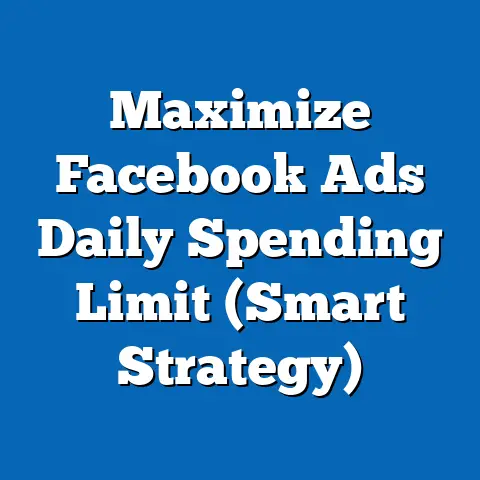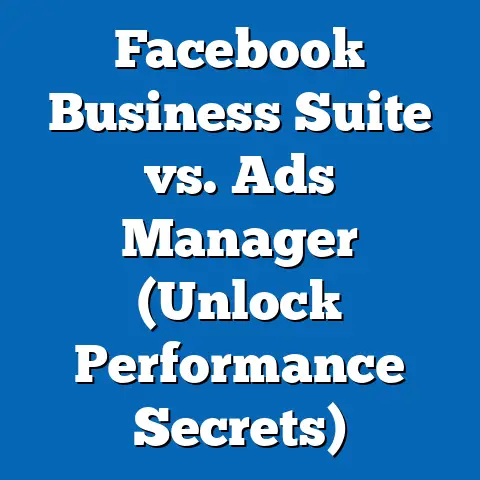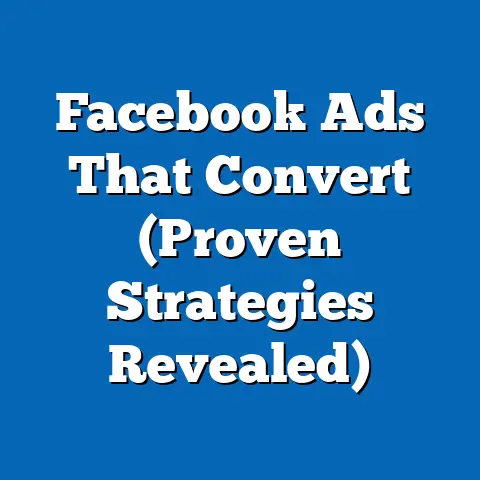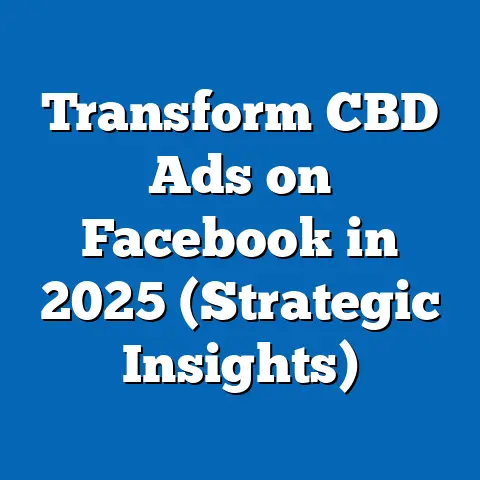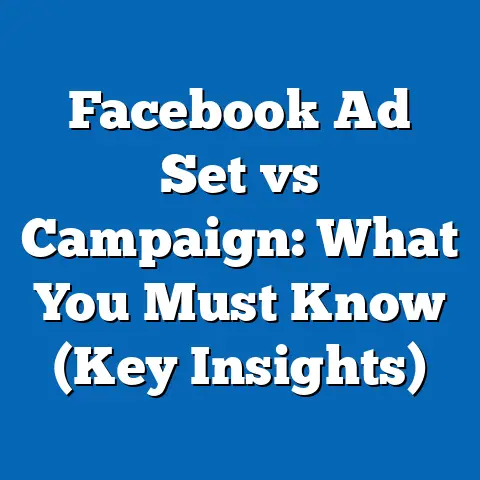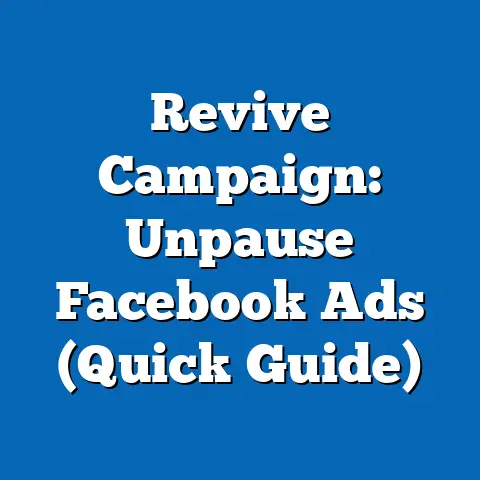Boost Facebook Ads Success with These Proven Tips (Game-Changer)
Ever tried baking a cake and it came out flat, dry, or just plain…wrong? I know I have! It’s frustrating, especially when you followed the recipe (sort of). Running a successful Facebook ad campaign is a lot like baking a gourmet cake. You can’t just throw ingredients together and hope for the best. You need the right ingredients, precise measurements, and a little bit of skill. A pinch of salt can elevate a dish, and the right targeting options or compelling ad copy can significantly enhance your ad performance. It’s not magic, but it sure feels like it when it works!
We’ll cover everything from understanding the Facebook Ads ecosystem to crafting compelling ad copy, selecting captivating visuals, targeting your audience effectively, and mastering budgeting and bidding strategies. Consider this your ultimate recipe for Facebook Ads success. Let’s get started!
Understanding the Facebook Ads Ecosystem
Before we dive into the specifics of crafting killer ads, it’s crucial to understand the landscape in which they operate. The Facebook Ads ecosystem is complex and ever-evolving, but grasping its fundamental components is key to creating effective campaigns.
Overview of Facebook Ads
Facebook Ads are paid advertisements displayed on Facebook, Instagram, Messenger, and the Audience Network. They are a powerful tool for businesses of all sizes to reach a massive audience, promote their products or services, and achieve various marketing objectives.
Why are Facebook Ads so important?
- Reach: Facebook has billions of active users worldwide, providing unparalleled reach for advertisers.
- Targeting: Facebook’s sophisticated targeting options allow you to pinpoint your ideal customers based on demographics, interests, behaviors, and more.
- Measurable Results: Facebook Ads Manager provides detailed analytics and reporting, allowing you to track your campaign performance and make data-driven optimizations.
- Flexibility: Facebook Ads offer a variety of ad formats and objectives, allowing you to tailor your campaigns to your specific needs and goals.
I remember when I first started using Facebook Ads. I was blown away by the sheer potential. The ability to target specific demographics, interests, and even behaviors was unlike anything I’d seen before. I ran a campaign for a local bakery, targeting people who had recently liked pages related to baking or dessert. The results were incredible! The bakery saw a significant increase in foot traffic and sales, all thanks to the power of Facebook Ads.
The Target Audience
Understanding your target audience is the cornerstone of any successful marketing campaign, and Facebook Ads are no exception. It’s like knowing who you’re cooking for before you even start choosing the ingredients. Who are you trying to reach? What are their interests, needs, and pain points?
Why is it so important?
- Relevance: Targeting the right audience ensures that your ads are relevant to the people who see them, increasing engagement and conversions.
- Efficiency: By focusing your efforts on the most likely customers, you can avoid wasting your budget on people who are unlikely to be interested in your products or services.
- Personalization: Understanding your audience allows you to personalize your ad copy and visuals, making them more appealing and effective.
Facebook provides a wealth of demographic data that advertisers can leverage to refine their targeting. This includes:
- Age: Target people within specific age ranges.
- Gender: Target men, women, or both.
- Location: Target people living in specific cities, regions, or countries.
- Interests: Target people based on their interests, hobbies, and passions.
- Behaviors: Target people based on their online behavior, such as purchase history, device usage, and travel habits.
- Demographics: Target people based on their education, relationship status, job title, and more.
I once worked with a client who was selling high-end organic baby food. Initially, they were targeting a broad audience of parents. However, after analyzing the data, we discovered that their ideal customers were affluent, health-conscious mothers living in urban areas. By refining our targeting to focus on this specific demographic, we saw a dramatic increase in ad performance and a significant reduction in wasted ad spend.
Takeaway: Spend time researching and understanding your target audience. Use Facebook’s demographic data to create highly targeted campaigns that resonate with your ideal customers.
Ad Formats
Facebook offers a variety of ad formats to suit different marketing objectives and creative styles. Choosing the right ad format can significantly impact your campaign performance.
Here are some of the most common ad formats:
- Image Ads: Single image ads are simple and effective for showcasing your product or service.
- Best for: Driving traffic to your website, promoting a specific product, or building brand awareness.
- Video Ads: Video ads are highly engaging and can capture attention more effectively than static images.
- Best for: Telling a story, demonstrating a product, or showcasing your brand’s personality.
- Carousel Ads: Carousel ads allow you to display multiple images or videos in a single ad unit, each with its own headline, description, and link.
- Best for: Showcasing multiple products, highlighting different features of a single product, or telling a story in a sequential format.
- Slideshow Ads: Slideshow ads are a cost-effective way to create a video-like experience using a series of static images.
- Best for: Creating simple product demos, showcasing testimonials, or telling a visual story on a budget.
- Collection Ads: Collection ads are designed for e-commerce businesses and allow users to browse and purchase products directly from the ad.
- Best for: Driving sales of multiple products, showcasing a catalog of items, or creating a visually appealing shopping experience.
- Instant Experience Ads: Formerly known as Canvas ads, Instant Experience ads are full-screen, mobile-optimized ads that load instantly when clicked.
- Best for: Telling immersive stories, showcasing products in detail, or creating interactive experiences.
- Best for: Driving traffic to your website, promoting a specific product, or building brand awareness.
- Best for: Telling a story, demonstrating a product, or showcasing your brand’s personality.
- Best for: Showcasing multiple products, highlighting different features of a single product, or telling a story in a sequential format.
- Best for: Creating simple product demos, showcasing testimonials, or telling a visual story on a budget.
- Best for: Driving sales of multiple products, showcasing a catalog of items, or creating a visually appealing shopping experience.
- Best for: Telling immersive stories, showcasing products in detail, or creating interactive experiences.
I remember when I first started experimenting with video ads. I was hesitant at first, thinking they would be too expensive to produce. However, I quickly realized that even a simple, well-produced video could generate significantly more engagement and conversions than a static image ad. I created a short video for a local restaurant, showcasing their delicious dishes and inviting viewers to make a reservation. The video went viral, and the restaurant was booked solid for weeks!
Takeaway: Experiment with different ad formats to see what works best for your target audience and marketing objectives. Don’t be afraid to try new things and push the boundaries of your creativity.
The Facebook Ads Auction System
Understanding how the Facebook Ads auction system works is crucial for managing your budget effectively and maximizing your ROI. Facebook Ads operates on an auction system where advertisers bid for the opportunity to show their ads to users.
Here’s how it works:
- Advertisers Define Their Target Audience: Advertisers specify their target audience based on demographics, interests, behaviors, and more.
- Advertisers Set Their Budget and Bid: Advertisers set a daily or lifetime budget for their campaign and choose a bidding strategy that aligns with their goals.
- Facebook Evaluates the Ads: When a user matches the targeting criteria of multiple ads, Facebook evaluates the ads based on a combination of factors, including the bid amount, ad quality, and estimated action rates.
- The Winning Ad is Displayed: The ad with the highest overall value is displayed to the user.
Factors that influence ad visibility and costs:
- Bid Amount: The amount you’re willing to pay for each ad impression or click.
- Ad Quality: The relevance and quality of your ad content.
- Estimated Action Rates: The likelihood that users will take the desired action, such as clicking on your ad, visiting your website, or making a purchase.
- Competition: The number of advertisers targeting the same audience.
I learned the importance of understanding the auction system the hard way. Early on, I was running a campaign with a very low bid, thinking I could save money. However, my ads were barely being shown, and I wasn’t getting any results. After doing some research, I realized that I needed to increase my bid to be competitive in the auction. Once I did that, my ads started getting more visibility, and my campaign performance improved dramatically.
Takeaway: Understand how the Facebook Ads auction system works and adjust your bidding strategy accordingly. Monitor your campaign performance closely and make adjustments as needed to maximize your ROI.
Crafting Compelling Ad Copy
Great visuals will grab attention, but compelling ad copy is what seals the deal. It’s the sizzle that sells the steak! Your ad copy should be clear, concise, and persuasive, highlighting the benefits of your product or service and compelling users to take action.
Headlines That Hook
Your headline is the first thing people see, so it needs to grab their attention and make them want to learn more. Think of it as the subject line of an email – it needs to be compelling enough to make people open it.
Tips for creating attention-grabbing headlines:
- Use Strong Verbs: Use action-oriented verbs that create a sense of urgency or excitement (e.g., Discover, Unlock, Transform).
- Ask a Question: Posing a question can pique curiosity and encourage users to click on your ad (e.g., Are You Tired of…? Do You Want to…?).
- Highlight a Benefit: Focus on the key benefit that your product or service provides (e.g., Get More Leads, Save Time, Increase Sales).
- Use Numbers: Numbers can add credibility and make your headline more specific (e.g., 5 Proven Strategies, 10 Must-Have Tools).
- Create a Sense of Scarcity: Emphasize limited-time offers or limited quantities to create a sense of urgency (e.g., Limited Time Offer, While Supplies Last).
Examples of effective headlines:
- “Discover the Secret to [Desired Outcome]”
- “Unlock Your Potential with [Product/Service]”
- “Transform Your Life with [Product/Service]”
- “Are You Ready to [Achieve a Specific Goal]?”
- “5 Proven Strategies to [Solve a Common Problem]”
- “Limited Time Offer: Get [Discount] on [Product/Service]”
I remember working on a campaign for a local gym. Initially, their headline was simply “Join Our Gym.” It was bland and uninspiring. After brainstorming with the team, we came up with a new headline: “Transform Your Body in 8 Weeks.” The new headline was much more compelling, highlighting the key benefit of joining the gym and creating a sense of urgency. We saw a significant increase in click-through rates and sign-ups after making the change.
Takeaway: Spend time crafting compelling headlines that grab attention and highlight the benefits of your product or service. Test different variations to see what works best for your target audience.
The Art of Storytelling
Storytelling is a powerful tool for creating emotional connections with your audience and making your ads more memorable. People are naturally drawn to stories, and a well-told story can capture their attention and make them more likely to engage with your brand.
How to use storytelling in your ad copy:
- Identify Your Audience’s Pain Points: Start by identifying the challenges and frustrations that your target audience faces.
- Introduce a Hero: Introduce a character who is facing the same challenges as your audience.
- Showcase the Transformation: Show how your product or service helps the hero overcome their challenges and achieve their goals.
- End with a Call to Action: Invite your audience to experience the same transformation by trying your product or service.
I once created a campaign for a financial planning company that used storytelling to great effect. We told the story of a young couple who were struggling to save for retirement. They were overwhelmed by debt and felt like they would never be able to achieve their financial goals. However, after working with the financial planning company, they were able to create a budget, pay off their debt, and start saving for retirement. The story resonated with our target audience, and we saw a significant increase in leads and new clients.
Takeaway: Use storytelling to create emotional connections with your audience and make your ads more memorable. Focus on the challenges and frustrations that your target audience faces and show how your product or service can help them achieve their goals.
Call-to-Action (CTA)
Your call-to-action (CTA) is the final nudge that encourages users to take the desired action. It’s the invitation to the party after you’ve wowed them with the music and decorations. A strong CTA should be clear, concise, and compelling, telling users exactly what you want them to do.
Tips for creating effective CTAs:
- Use Action-Oriented Language: Use verbs that encourage users to take action (e.g., Shop Now, Learn More, Sign Up, Get Started).
- Create a Sense of Urgency: Emphasize limited-time offers or limited quantities to encourage users to act quickly (e.g., Shop Now Before It’s Too Late, Limited Time Offer).
- Highlight the Benefit: Focus on the key benefit that users will receive by taking the desired action (e.g., Get Your Free Guide, Start Your Free Trial).
- Make it Visually Appealing: Use contrasting colors and a clear font to make your CTA stand out.
- Place it Prominently: Make sure your CTA is easy to find and click on.
Examples of effective CTAs:
- Shop Now
- Learn More
- Sign Up
- Get Started
- Download Now
- Claim Your Offer
- Book Now
- Contact Us
I once worked with a client who was selling online courses. Initially, their CTA was simply “Click Here.” It was generic and uninspiring. After some brainstorming, we came up with a new CTA: “Start Your Free Trial Today.” The new CTA was much more compelling, highlighting the key benefit of trying the course and creating a sense of urgency. We saw a significant increase in sign-ups after making the change.
Takeaway: Craft strong CTAs that are clear, concise, and compelling. Use action-oriented language, create a sense of urgency, and highlight the benefits of taking the desired action.
Testing and Optimization
Crafting the perfect ad copy is an iterative process. It’s not a one-and-done deal! You need to test different variations and analyze the results to see what works best for your target audience. A/B testing is a powerful tool for optimizing your ad copy.
How to A/B test your ad copy:
- Create Multiple Variations: Create two or more variations of your ad copy, changing only one element at a time (e.g., headline, body text, CTA).
- Run Your Ads Simultaneously: Run your ads simultaneously, targeting the same audience.
- Track Your Results: Track the performance of each ad variation, paying attention to metrics such as click-through rate, conversion rate, and cost per conversion.
- Analyze Your Results: Analyze the data to see which ad variation performed best.
- Implement the Winning Variation: Implement the winning variation and continue testing to further optimize your ad copy.
I’m a huge believer in A/B testing. I’ve seen firsthand how even small changes in ad copy can have a significant impact on campaign performance. I once ran an A/B test on a campaign for a local coffee shop. We tested two different headlines: “Best Coffee in Town” and “Start Your Day with the Best Coffee in Town.” The second headline, which included the phrase “Start Your Day,” performed significantly better, generating a higher click-through rate and more foot traffic to the coffee shop.
Takeaway: Make A/B testing a regular part of your ad creation process. Test different variations of your ad copy and analyze the results to see what resonates best with your target audience.
Visual Elements That Captivate
In the fast-paced world of social media, visuals are king. Your images and videos are the first thing people see, and they need to be eye-catching and engaging to capture their attention. Think of it as the window display of your store – it needs to be attractive enough to entice people to come inside.
Importance of Visuals
Visuals are crucial in Facebook ads for several reasons:
- Capture Attention: Compelling visuals can cut through the noise and grab users’ attention as they scroll through their feeds.
- Convey Information Quickly: Visuals can communicate complex information quickly and easily.
- Create Emotional Connections: Visuals can evoke emotions and create a deeper connection with your audience.
- Drive Engagement: High-quality visuals can increase click-through rates, shares, and comments.
Statistics about engagement rates:
- Facebook posts with images see 2.3X more engagement than those without images.
- Videos generate 1200% more shares than text and image content combined.
- 64% of consumers say that watching a marketing video on Facebook has influenced a purchase decision.
I’ve always been a visual person, so I understand the power of a great image or video. I remember working on a campaign for a clothing brand. Initially, their ads featured generic product photos. However, after switching to high-quality lifestyle images that showcased their clothes in a more aspirational way, we saw a significant increase in engagement and sales.
Takeaway: Invest in high-quality visuals that capture attention, convey information quickly, and create emotional connections with your audience.
Choosing the Right Images
Selecting the right images for your Facebook ads is crucial for attracting attention and resonating with your target audience.
Tips for choosing the right images:
- Relevance: Choose images that are relevant to your product or service and your target audience.
- High Quality: Use high-resolution images that are clear, crisp, and well-lit.
- Eye-Catching: Select images that are visually appealing and stand out from the crowd.
- Authenticity: Use authentic images that reflect your brand’s personality and values.
- Diversity: Consider using images that feature diverse models and backgrounds to appeal to a wider audience.
I once worked with a client who was selling travel packages. Initially, their ads featured stock photos of generic beaches and landmarks. However, after switching to authentic photos of real travelers enjoying their destinations, we saw a significant increase in engagement and bookings.
Takeaway: Choose images that are relevant, high-quality, eye-catching, authentic, and diverse. Avoid using generic stock photos and invest in images that reflect your brand’s personality and values.
Video Content
Video content is exploding in popularity on social media, and it’s a powerful tool for capturing attention, telling stories, and driving engagement.
Tips for creating engaging video ads:
- Keep it Short and Sweet: Aim for videos that are 15-30 seconds long.
- Grab Attention Quickly: Capture viewers’ attention in the first few seconds.
- Tell a Story: Use storytelling to create emotional connections with your audience.
- Showcase Your Product: Demonstrate how your product works and highlight its key benefits.
- Include a Call to Action: Tell viewers what you want them to do next.
- Optimize for Mobile: Make sure your videos are optimized for mobile viewing.
- Use Captions: Add captions to your videos so that people can understand them even if they have the sound turned off.
I’ve seen firsthand the power of video ads. I once created a short video for a local bakery, showcasing their delicious pastries and inviting viewers to come in for a treat. The video went viral, and the bakery was packed for weeks!
Takeaway: Embrace video content and use it to capture attention, tell stories, and drive engagement. Keep your videos short and sweet, grab attention quickly, and include a clear call to action.
Consistency in Branding
Maintaining brand consistency across your visual elements is crucial for building trust and recognition. Your ads should reflect your brand’s personality, values, and visual identity.
Tips for maintaining brand consistency:
- Use Your Brand Colors: Use your brand colors in your images, videos, and ad copy.
- Use Your Brand Fonts: Use your brand fonts in your ad copy and visual elements.
- Use Your Brand Logo: Include your brand logo in your ads.
- Maintain a Consistent Tone: Use a consistent tone of voice in your ad copy and visual elements.
- Use Consistent Imagery: Use consistent imagery that reflects your brand’s personality and values.
I always emphasize the importance of brand consistency to my clients. It’s like having a signature style – it helps people recognize and remember your brand. I once worked with a client who was rebranding their business. We created a new logo, color palette, and font system, and we made sure to use these elements consistently across all of their marketing materials, including their Facebook ads. The result was a more cohesive and professional brand image that resonated with their target audience.
Takeaway: Maintain brand consistency across your visual elements to build trust and recognition. Use your brand colors, fonts, logo, and imagery consistently in your ads.
Targeting Your Audience Effectively
Imagine throwing a party and inviting everyone you know, even people who hate music, dancing, and socializing. That’s what it’s like to run Facebook ads without effective targeting. Facebook’s targeting options are incredibly powerful, allowing you to pinpoint your ideal customers based on a wide range of criteria.
Custom Audiences
Custom audiences allow you to target people who have already interacted with your business, such as website visitors, email subscribers, or app users. This is a highly effective way to re-engage existing customers and drive conversions.
How to create custom audiences:
- Website Traffic: Target people who have visited specific pages on your website.
- Customer List: Upload a list of your customers’ email addresses or phone numbers.
- App Activity: Target people who have used your mobile app.
- Engagement: Target people who have interacted with your Facebook page or ads.
I’ve found that custom audiences are one of the most effective targeting options available on Facebook. I once created a custom audience of people who had visited the product pages on a client’s website but had not made a purchase. We then targeted these users with retargeting ads, offering them a discount on their purchase. The result was a significant increase in sales and a high return on investment.
Takeaway: Leverage custom audiences to target people who have already interacted with your business. This is a highly effective way to re-engage existing customers and drive conversions.
Lookalike Audiences
Lookalike audiences allow you to reach new people who are similar to your existing customers. This is a great way to expand your reach and find new potential customers who are likely to be interested in your products or services.
How lookalike audiences work:
- Create a Source Audience: Create a source audience based on your existing customers, website visitors, or app users.
- Facebook Analyzes the Source Audience: Facebook analyzes the characteristics and behaviors of your source audience.
- Facebook Finds Similar People: Facebook finds new people who are similar to your source audience based on their demographics, interests, and behaviors.
- Target Your Lookalike Audience: Target your lookalike audience with your Facebook ads.
I’ve had great success with lookalike audiences. I once created a lookalike audience based on a client’s existing customer list. We then targeted this audience with ads promoting their new product. The result was a significant increase in sales and a high return on investment.
Takeaway: Use lookalike audiences to expand your reach and find new potential customers who are similar to your existing customers.
Detailed Targeting Options
Facebook offers a wide range of detailed targeting options that allow you to pinpoint your ideal customers based on their demographics, interests, behaviors, and more.
Detailed targeting options include:
- Demographics: Target people based on their age, gender, location, education, relationship status, job title, and more.
- Interests: Target people based on their interests, hobbies, and passions.
- Behaviors: Target people based on their online behavior, such as purchase history, device usage, and travel habits.
- Connections: Target people who are connected to your Facebook page or event.
I often use a combination of detailed targeting options to create highly targeted campaigns. For example, if I’m running a campaign for a local bookstore, I might target people who are interested in books, reading, and literature, and who live within a certain radius of the bookstore.
Takeaway: Use Facebook’s detailed targeting options to pinpoint your ideal customers based on their demographics, interests, behaviors, and more.
Retargeting Strategies
Retargeting ads are a powerful way to re-engage users who have interacted with your brand previously but have not yet converted. These ads remind users of your products or services and encourage them to take the next step.
Retargeting strategies include:
- Website Retargeting: Target people who have visited your website but have not made a purchase.
- Product Retargeting: Target people who have viewed specific products on your website.
- Cart Abandonment Retargeting: Target people who have added items to their cart but have not completed their purchase.
- Lead Form Retargeting: Target people who have filled out a lead form but have not yet become customers.
I’ve found that retargeting ads are incredibly effective for driving conversions. I once created a retargeting campaign for an e-commerce client, targeting people who had added items to their cart but had not completed their purchase. We offered these users a discount on their purchase, and the result was a significant increase in sales and a high return on investment.
Takeaway: Implement retargeting strategies to re-engage users who have interacted with your brand previously but have not yet converted. Offer them a discount or other incentive to encourage them to take the next step.
Budgeting and Bidding Strategies
Budgeting and bidding strategies are the financial backbone of your Facebook Ads campaigns. It’s like knowing how much money you can spend on ingredients and how much you’re willing to pay for the best cuts of meat. Setting a budget that aligns with your goals and choosing the right bidding strategy are crucial for maximizing your ROI.
Setting a Budget
Determining an appropriate budget for your Facebook ads is a balancing act. You need to spend enough to reach your target audience and achieve your goals, but you don’t want to overspend and waste money.
Factors to consider when setting your budget:
- Your Goals: What are you trying to achieve with your Facebook ads? Are you trying to generate leads, drive sales, or build brand awareness?
- Your Target Audience: How large is your target audience? The larger your audience, the more you’ll need to spend to reach them.
- Your Industry: How competitive is your industry? The more competitive your industry, the more you’ll need to spend to stand out from the crowd.
- Your Ad Quality: How relevant and engaging are your ads? The higher the quality of your ads, the less you’ll need to spend to achieve your goals.
Tips for setting your budget:
- Start Small: Start with a small budget and gradually increase it as you see results.
- Set a Daily Budget: Set a daily budget to control your spending and prevent overspending.
- Set a Lifetime Budget: Set a lifetime budget for your campaign to ensure that you don’t exceed your overall budget.
- Monitor Your Performance: Monitor your campaign performance closely and adjust your budget as needed.
I always advise my clients to start small and gradually increase their budget as they see results. It’s like testing the waters before diving in headfirst. I once worked with a client who was launching a new product. We started with a small daily budget and gradually increased it as we saw more and more people engaging with our ads and visiting their website. The result was a successful product launch and a high return on investment.
Takeaway: Determine an appropriate budget for your Facebook ads based on your goals, target audience, industry, and ad quality. Start small and gradually increase your budget as you see results.
Bidding Strategies
Facebook offers a variety of bidding strategies that allow you to control how much you’re willing to pay for each ad impression or click. Choosing the right bidding strategy can significantly impact your campaign performance and ROI.
Common bidding strategies:
- Cost Per Click (CPC): You pay each time someone clicks on your ad.
- Best for: Driving traffic to your website.
- Cost Per Impression (CPM): You pay for every 1,000 impressions your ad receives.
- Best for: Building brand awareness.
- Cost Per Acquisition (CPA): You pay each time someone takes a desired action, such as making a purchase or filling out a lead form.
- Best for: Driving conversions.
- Lowest Cost: Facebook automatically sets your bid to get the most results for your budget.
- Best for: Beginners who want to let Facebook optimize their bids.
- Target Cost: Facebook tries to get you the most results while staying as close as possible to your target cost.
- Best for: Advertisers who have a specific cost in mind.
- Best for: Driving traffic to your website.
- Best for: Building brand awareness.
- Best for: Driving conversions.
- Best for: Beginners who want to let Facebook optimize their bids.
- Best for: Advertisers who have a specific cost in mind.
I’ve experimented with different bidding strategies over the years, and I’ve found that the best strategy depends on your goals and the specific campaign you’re running. For example, if I’m trying to drive traffic to a client’s website, I’ll typically use the CPC bidding strategy. However, if I’m trying to build brand awareness, I’ll use the CPM bidding strategy.
Takeaway: Choose the right bidding strategy based on your goals and the specific campaign you’re running. Experiment with different bidding strategies to see what works best for your target audience and marketing objectives.
Monitoring and Adjusting Spend
Monitoring your ad spend and making adjustments based on performance metrics is crucial for maximizing your ROI. It’s like checking the oven temperature and adjusting the cooking time to ensure that your cake comes out perfectly.
Metrics to monitor:
- Impressions: The number of times your ad has been shown.
- Reach: The number of unique people who have seen your ad.
- Clicks: The number of times people have clicked on your ad.
- Click-Through Rate (CTR): The percentage of people who have seen your ad and clicked on it.
- Conversion Rate: The percentage of people who have clicked on your ad and taken a desired action.
- Cost Per Click (CPC): The amount you’re paying for each click on your ad.
- Cost Per Acquisition (CPA): The amount you’re paying for each desired action.
Tips for adjusting your spend:
- Increase Your Budget: If your ads are performing well, consider increasing your budget to reach more people.
- Decrease Your Budget: If your ads are not performing well, consider decreasing your budget to save money.
- Adjust Your Bids: If your CPC or CPA is too high, consider lowering your bids.
- Pause Underperforming Ads: Pause ads that are not performing well and focus on the ones that are.
- Refine Your Targeting: Refine your targeting to reach a more relevant audience.
- Improve Your Ad Copy and Visuals: Improve your ad copy and visuals to make your ads more engaging.
I’m a firm believer in monitoring and adjusting ad spend on a regular basis. It’s like fine-tuning an engine to optimize performance. I once worked with a client who was running a campaign with a very high CPC. After analyzing the data, we discovered that their ads were not relevant to their target audience. We refined their targeting and improved their ad copy, and the result was a significant decrease in their CPC and a higher return on investment.
Takeaway: Monitor your ad spend and performance metrics regularly and make adjustments as needed to maximize your ROI.
Scaling Successful Campaigns
Once you’ve identified a winning campaign, it’s time to scale it up and reach even more people. Scaling a campaign involves increasing your budget and expanding your reach without sacrificing performance.
Tips for scaling successful campaigns:
Takeaway: Scale your winning campaigns by gradually increasing your budget, expanding your targeting, creating new ads, and testing new placements. Monitor your campaign performance closely and make adjustments as needed.
Let’s recap the key takeaways:
- Understand Your Audience: Know your target audience inside and out. Use Facebook’s demographic data to create highly targeted campaigns that resonate with your ideal customers.
- Craft Compelling Ad Copy: Write clear, concise, and persuasive ad copy that highlights the benefits of your product or service. Use strong headlines, storytelling, and clear calls to action.
- Use High-Quality Visuals: Invest in high-quality images and videos that capture attention and convey information quickly.
- Target Effectively: Leverage custom audiences, lookalike audiences, and detailed targeting options to reach the right people.
- Budget Wisely: Set a budget that aligns with your goals and choose the right bidding strategy to maximize your ROI.
- Test and Optimize: Make A/B testing a regular part of your ad creation process. Monitor your campaign performance closely and make adjustments as needed.
- Stay Consistent with Branding: Keep your brand consistent across all your ad elements.
- Scale Success: Once you’ve identified a winning campaign, scale it up to reach even more people.
Mastering Facebook ads is an ongoing process that involves experimentation, learning, and adaptation. It’s not a destination, but a journey. Don’t be afraid to try new things, push the boundaries of your creativity, and learn from your mistakes. I’ve made plenty of mistakes along the way, but each one has taught me something valuable.
I encourage you to take these proven tips and implement them in your campaigns to boost your success and achieve your marketing objectives. Remember, the right ingredients, precise measurements, and a little bit of skill can transform your Facebook ad campaigns from bland to brilliant. Now go out there and create some culinary masterpieces of your own!

